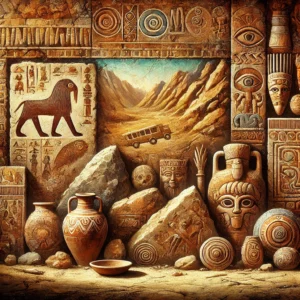Ancient Artz: A Glimpse into Timeless Creativity
Ancient artz represent the early expressions of human creativity that have shaped civilizations throughout history. From cave paintings to grand sculptures, these masterpieces tell the stories of our ancestors and their ways of life.
What is Ancient Artz?
The term “ancient artz” refers to the artistic creations of early human civilizations. These works of art range from simple tools and cave drawings to intricate pottery, statues, and monumental architecture. The primary aim was to communicate ideas, beliefs, and daily experiences. Even after thousands of years, these creations continue to fascinate us with their beauty and cultural significance.
The Origin of Ancient Artz
Art has been a part of human existence since the dawn of time. One of the earliest forms of ancient art is found in cave paintings, such as those in Lascaux, France, which date back to 17,000 years ago. These early artists used natural pigments to create images of animals, human figures, and symbols. Over time, as civilizations grew, so did their artistic capabilities.
Influence of Ancient Cultures
Ancient Egypt, Greece, and Mesopotamia were some of the most influential cultures in shaping the ancient artz landscape. Each of these civilizations had its distinct style and themes. Egyptian art, for instance, is known for its highly symbolic representation of gods, pharaohs, and the afterlife. Greek art, on the other hand, emphasized realism and the human form, which can be seen in their sculptures and pottery.
Symbolism in Ancient Artz

Symbolism played a significant role in ancient artz. Much of the art created in ancient times was not merely for decoration but held deep religious or social meanings. For example, in ancient Egypt, statues of gods and goddesses were created to honor and connect with divine powers. Similarly, in the ancient Mayan civilization, their elaborate carvings and murals often depicted stories of their rulers and their relation to the gods.
Materials and Techniques
Ancient artists used materials available in their environment, including clay, stone, wood, and metal. They also developed innovative techniques to create their art. Pottery-making, for instance, was a vital skill in many cultures, and the use of kilns allowed for more durable and intricate designs. In Greece, artists perfected the use of marble in sculpture, while in Mesopotamia, clay tablets were used for cuneiform writing and storytelling.
Preservation of Ancient Artz
Many ancient artworks have survived the test of time due to the durable materials used and the importance placed on preservation by ancient societies. The pyramids of Egypt, for example, were designed to last for eternity, and they have stood for over 4,000 years. Likewise, the Parthenon in Greece remains a testament to ancient architectural and artistic ingenuity.
The Legacy of Ancient Artz

Ancient artz continue to inspire modern artists and architects. Their techniques, symbolism, and dedication to craft are still studied and admired today. Many art movements throughout history, such as the Renaissance, looked to the past for inspiration, reviving ancient techniques and ideals in their work. In a way, ancient artz serve as a bridge between the past and the present, connecting us to the creativity and culture of our ancestors.
Why Ancient Artz Matters Today
In today’s world, ancient artz offer more than just a glimpse into the past. They remind us of our shared human experience and the universal need for self-expression. The stories told through these ancient creations still resonate with us, teaching us about resilience, belief, and the beauty of life. By preserving and studying ancient art, we gain a better understanding of where we came from and how we have evolved as a species.
Conclusion
Ancient artz is a testament to the ingenuity and creativity of early human civilizations. Whether through cave paintings, grand temples, or intricate sculptures, these works continue to captivate us. As we explore the art of our ancestors, we gain insight into their world and discover how their creativity has shaped the modern era. The legacy of ancient artz is not just in the museums but in the way it continues to influence and inspire us today.














Post Comment